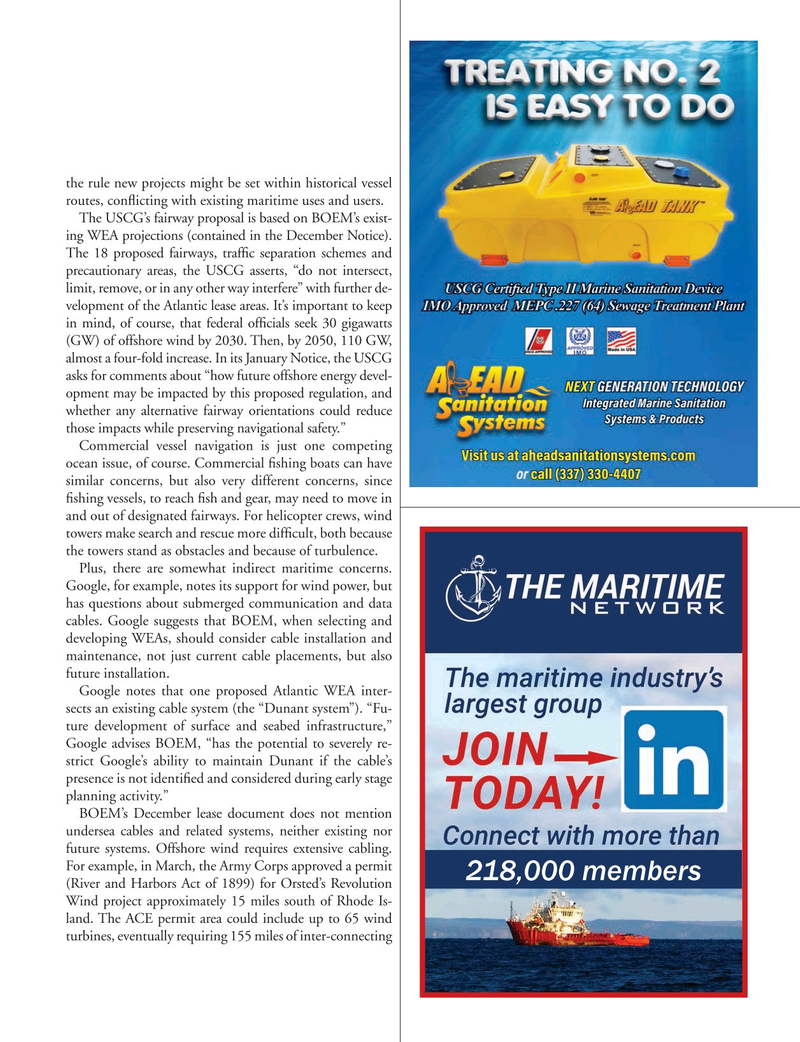
Page 23: of Marine News Magazine (April 2024)
Read this page in Pdf, Flash or Html5 edition of April 2024 Marine News Magazine
the rule new projects might be set within historical vessel routes, con? icting with existing maritime uses and users.
The USCG’s fairway proposal is based on BOEM’s exist- ing WEA projections (contained in the December Notice).
The 18 proposed fairways, traf? c separation schemes and precautionary areas, the USCG asserts, “do not intersect, limit, remove, or in any other way interfere” with further de- velopment of the Atlantic lease areas. It’s important to keep in mind, of course, that federal of? cials seek 30 gigawatts (GW) of offshore wind by 2030. Then, by 2050, 110 GW, almost a four-fold increase. In its January Notice, the USCG asks for comments about “how future offshore energy devel- opment may be impacted by this proposed regulation, and whether any alternative fairway orientations could reduce those impacts while preserving navigational safety.”
Commercial vessel navigation is just one competing ocean issue, of course. Commercial ? shing boats can have similar concerns, but also very different concerns, since ? shing vessels, to reach ? sh and gear, may need to move in and out of designated fairways. For helicopter crews, wind towers make search and rescue more dif? cult, both because the towers stand as obstacles and because of turbulence.
Plus, there are somewhat indirect maritime concerns.
Google, for example, notes its support for wind power, but has questions about submerged communication and data cables. Google suggests that BOEM, when selecting and developing WEAs, should consider cable installation and maintenance, not just current cable placements, but also future installation.
Google notes that one proposed Atlantic WEA inter- sects an existing cable system (the “Dunant system”). “Fu- ture development of surface and seabed infrastructure,”
Google advises BOEM, “has the potential to severely re- strict Google’s ability to maintain Dunant if the cable’s presence is not identi? ed and considered during early stage planning activity.”
BOEM’s December lease document does not mention undersea cables and related systems, neither existing nor future systems. Offshore wind requires extensive cabling.
For example, in March, the Army Corps approved a permit 218,000 members (River and Harbors Act of 1899) for Orsted’s Revolution
Wind project approximately 15 miles south of Rhode Is- land. The ACE permit area could include up to 65 wind turbines, eventually requiring 155 miles of inter-connecting

 22
22

 24
24
